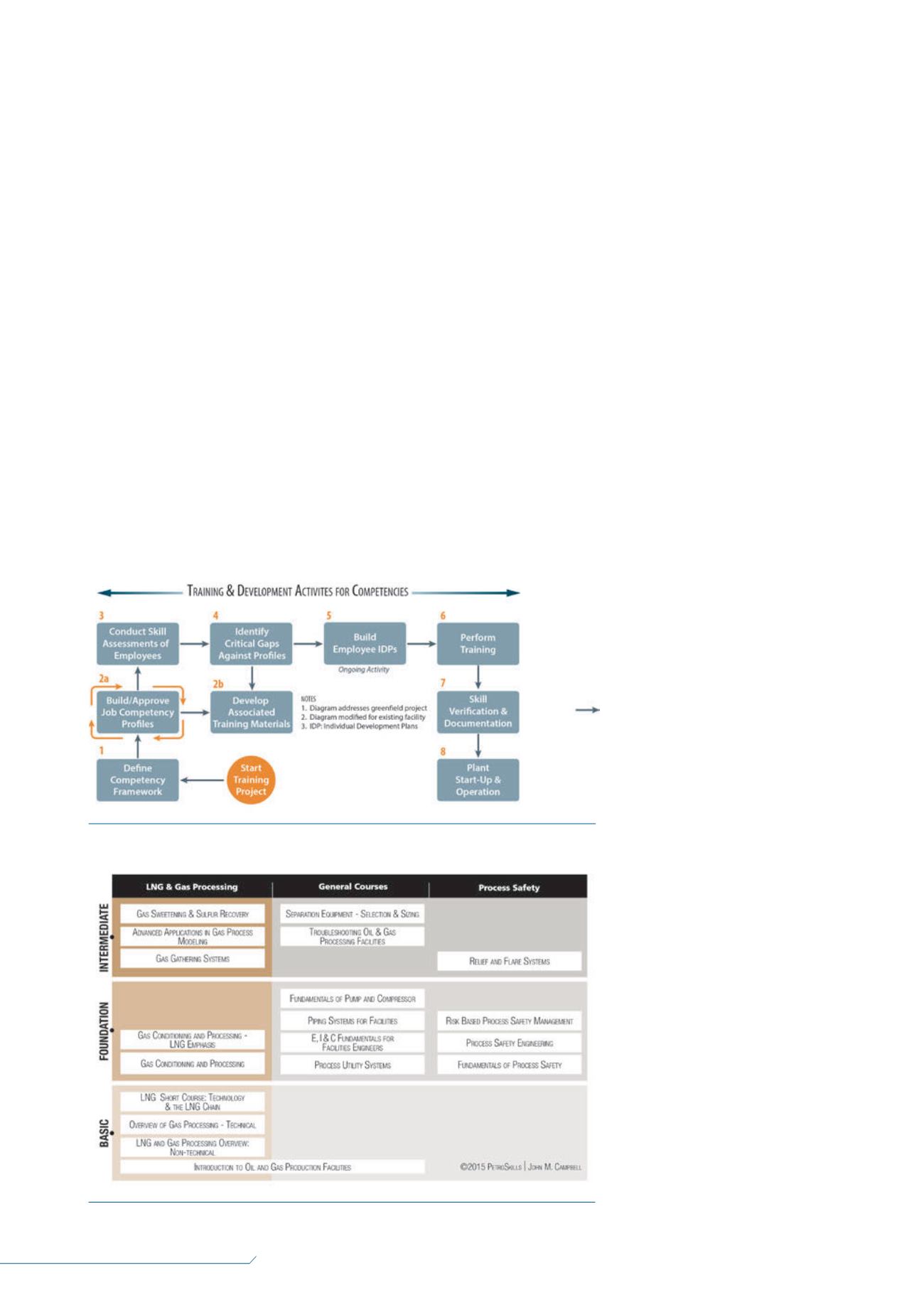
92
LNG
INDUSTRY
MARCH
2016
related to LNG truck, coastal shipping, and barge cargo loading.
The rapid growth in LNG-fuelled ships requires further training in
LNG bunkering skills, such as hose handling, etc.
What to teach: instructional
design
An alliance of companies has established common course
content for many oil and gas activities. For example, in drilling,
the required competencies are defined and mapped into a
competency management system.
Likewise, in oil and gas facilities, such as LNG plants, there
are established courses and learning programmes to train small
or large groups. Figure 2 shows a simplified training and
development sequence for operations technicians on a
greenfield project. Versions of this sequence can address existing
plants that require a structured training and development
programme.
In Figure 2, the various job roles and positions matching the
organisation chart are identified in Box 1.
Box 2a represents the major effort to define the necessary
skills for each position. Initially, these can be high-level
summaries for each skill/position, but at some point, an
agreed-upon detailed skills list will be needed. The clockwise
series of arrows around Box 2a signifies the iterative nature of
discussions leading to an agreement on required skills. These
skills need documenting. Competency maps (CMAPS) are an
established format for such documentation and will be
discussed later.
Box 2b, coupled with an instructional design function,
defines the required training programme to deliver the required
skills and competencies for LNG plant staff.
The activities in Boxes 3 and 4 culminate in identifying critical
skill gaps in employees. These activities serve to both refine
training materials and also form the basis for employee
individual development plans (IDPs) (Box 5).
The ‘ongoing activity’ note accompanying Box 5 is a
reminder that training and development is an ongoing individual
activity long after start-up. The IDP is a roadmap for the
employee’s future career growth.
Box 6 covers the actual training programme delivery. The
training programme needs careful scheduling to dovetail with
LNG plant start-up.
The important skill verification and documentation in Box 7
should reside in a company’s learning management function.
This systematic approach documents the team’s preparedness
to begin complex operations.
Returning, for a moment, to Box 2a and the documenting
(mapping) of the skills – such maps already exist within the
CMAPS of the 34 companies constituting the PetroSkills training
alliance. In this alliance, a system of curriculum advisors,
discipline managers and subject matter experts create CMAPS
that meet their needs and satisfy their standards. In turn, training
materials are based on these
competencies.
Owner-managed
training
This training is best done as a direct
owner-led activity. This allows the
management structure established
during the training phase to flow into
start-up and operations, producing
continuity and confidence. Why would
an owner want to avoid and neglect
the rapport developed between
trainers and operations just when most
needed during the stress of start-up
and initial operation?
With direct owner-led training, the
operations supervision and
management are already familiar with
the personalities, strengths and
limitations of all operating technicians
and maintenance teammembers at
start-up.
A detailed training programme for
operations technicians should include
separation, absorber, adsorber, and
refrigeration theory from the
perspective of hydrocarbons, both
chemically and physically. Laboratory
settings would also be included where
hands-on experience in a controlled
environment would test the theory and
enforce key learnings.
This is followed by hands-on
training on plant equipment for skill
verification and documentation. This
training is specific to each individual
Figure 2.
Training and development sequence.
Figure 3.
Example engineering course progression.


